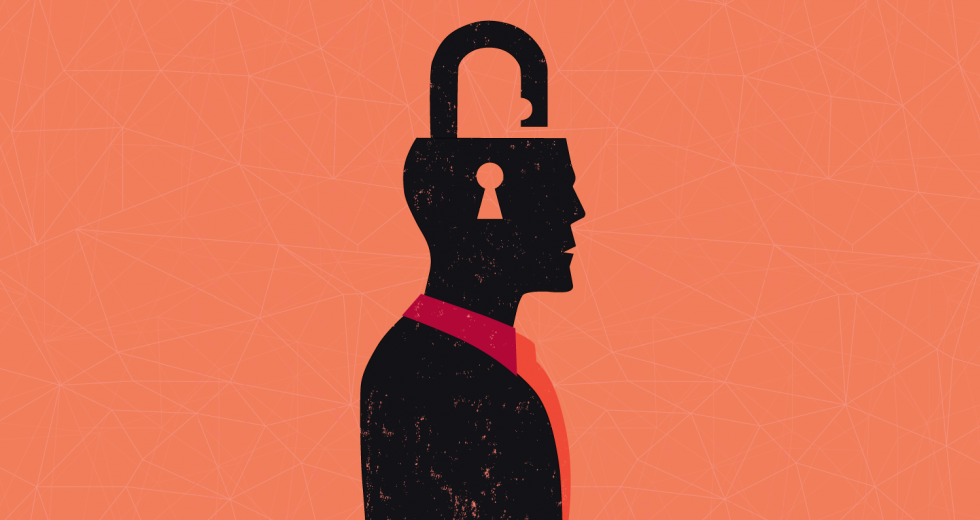Have you heard the riddle of a father and son who get in a horrible car crash that kills the dad? The son is rushed to the hospital and the surgeon exclaims, “I can’t operate, that boy is my son!” The listener’s expectation is challenged when the riddle’s answer is given: The surgeon might be the boy’s mother. Or have you heard about how people see meaningful shapes in their grilled cheese sandwich or homegrown potato? Once you see them, you can’t unsee them; what your mind has conjured becomes your reality. You’ve also likely heard Albert Einstein’s keen observation that the kind of thinking that got you into a situation is not the same kind of thinking that will get you out of it.
All of these examples have one common theme: Being locked into one way of thinking blinds us to other possibilities.
As a leadership coach, one of my jobs is to help people unlock their minds. How we implement goals, find solutions to challenges, innovate and deal with people all require thinking beyond the narrow limits of where our minds tend to park themselves. We develop knowledge and responses based on our life experiences — what is unfamiliar becomes unsettling or even scary. So we often downplay or eliminate unknown possibilities. This is why explorers are remarkable: They bravely go where no one else has been. But where you go doesn’t have to make headlines. You can be brave, too, by simply going where you haven’t gone before.
The first step to unlocking the mind is to break out of the either/or mindset. As humans, we are comfortable operating in this paradigm. If you place “either” on one end of a continuum and “or” on the other, what fills the space between both options? The either/or framework allows for no equivocation — you have only two options. Yet the space in between these two polarities is chock full of lonely and unexplored options. Changing how we think about something requires unthinking what we have come to believe is true, and that takes some serious effort.
I often hear these responses when brainstorming with teams: An idea is suggested and someone else blithely sighs, “It’ll never work,” “We tried that five years ago” or “Great idea, but we just don’t have the bandwidth to make that happen.” Thud. The idea is then rendered idea non grata unless a brave soul presses on.
Conversely, forward-thinking organizations encourage people to ask questions about new ideas, like, “How can we make this happen?” or “From what new perspective can we look at this?” These organizations analyze the viability of a new idea before summarily discarding it. I advise my clients to ask questions to determine which ideas offer the greatest potential for the organization to excel. Then, explore away … creativity is free.
To shift perspectives, ask team members to list all of the stakeholders impacted by their business, and think about what each stakeholder is hoping for and expecting from the organization. This immediately shifts the thinking away from either/or, triggering a set of questions about meeting stakeholder expectations. One organization I’ve worked with had an epiphany: They had never given thought to a certain stakeholder experience, even though they had to indirectly deal with this stakeholder all the time. Another team realized they could actively enhance customer engagement by really looking at the experience through their customers’ eyes.
Getting out of the either/or lock-up is often about being brave, taking on a different perspective, asking better questions and looking for nuance that you previously overlooked.
Smart companies ask themselves: “Where is our opportunity to flex competitively?” They then explore that opportunity. Today, many smart organizations have “innovation days” where employees are given 20 percent paid time to play with new ideas that can help the company innovate — ideas are presented in a fun innovation day conference.
And I am not simply talking about innovation in the context of the tech-related. We can still innovate how we work with each other, how we approach sales and marketing, strategy development and so on.
It’s about looking up and seeing the changing dynamics through a fresh framework, whether it be by asking better questions or bringing a fresh set of eyes.



